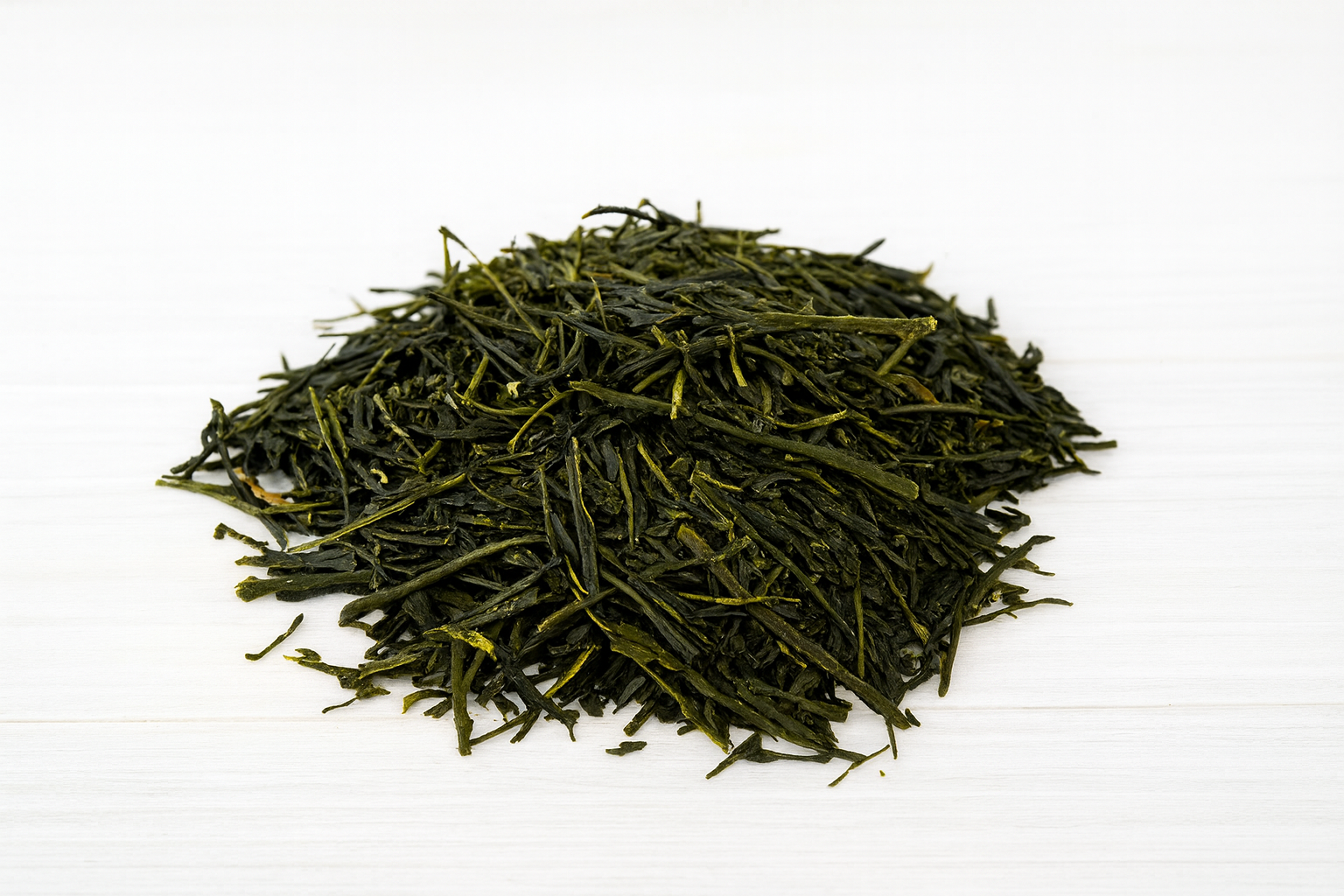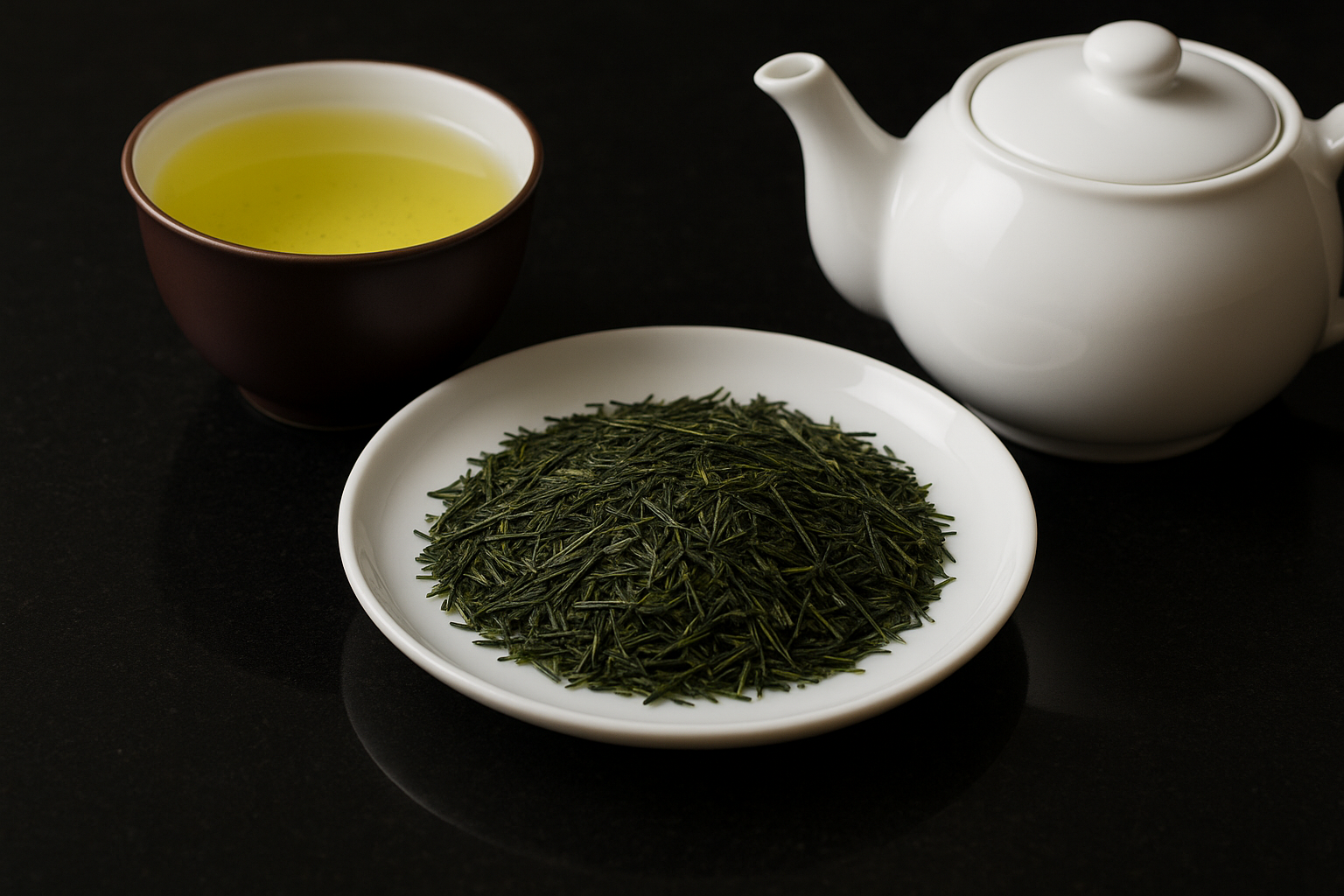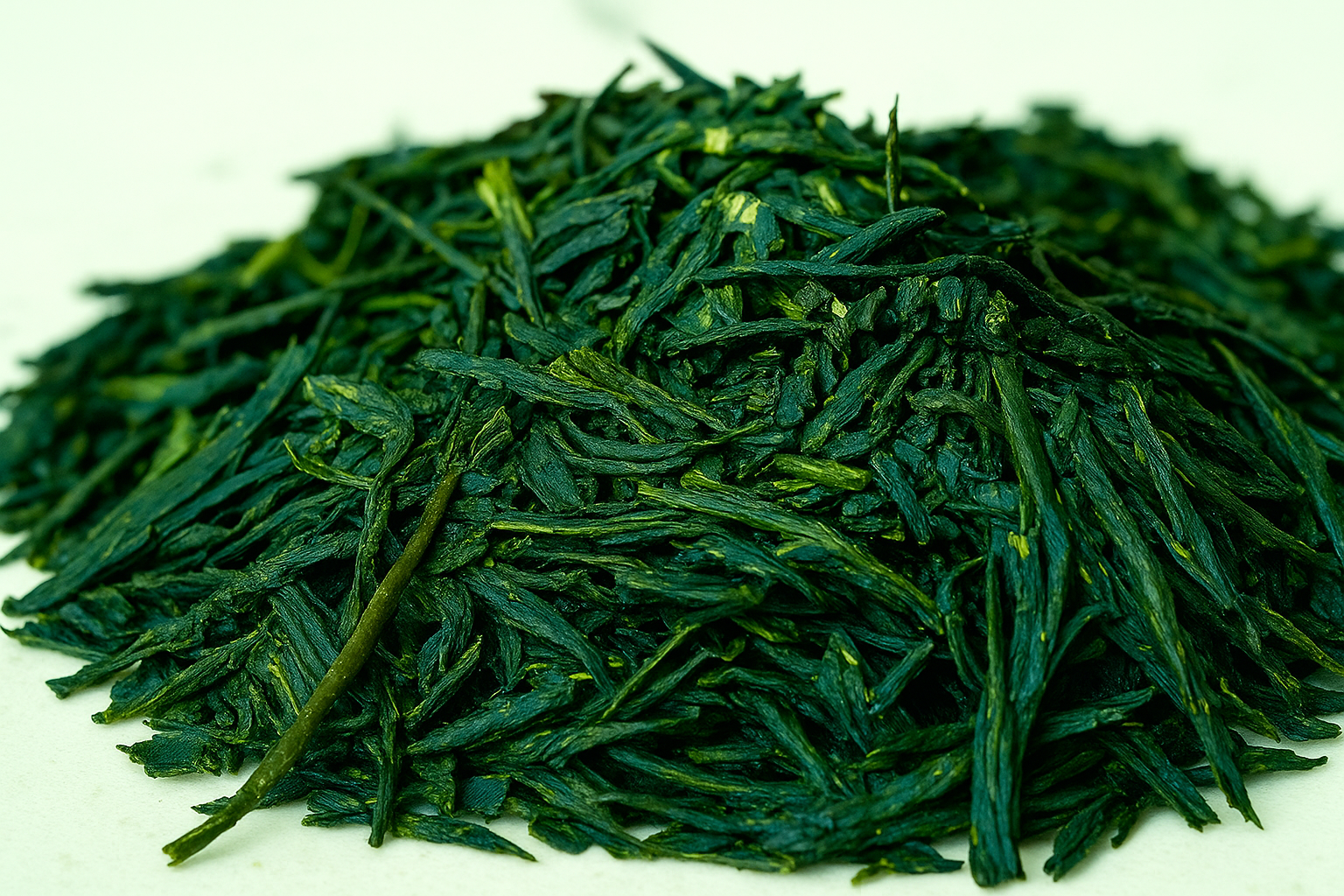Gyokuro
Luxurious, sweet, and savory — the pinnacle of Japanese green tea.
- Category: Shade-grown green tea (Camellia sinensis)
- Origin: Japan — especially Uji (Kyoto), Yame (Fukuoka), and Asahina (Shizuoka).
- Harvest: First flush (ichibancha, late April–May), shaded for 20–30 days before harvest to boost chlorophyll and L-theanine.
- Grade: High-grade Gyokuro; Standard Gyokuro; Blended Gyokuro



Tasting Profile
Brewing Guide
- Tea-to-water ratio~5 g tea leaves per 50–60 ml water.
- Water temperature50–60 °C (122–140 °F) — much lower than other green teas to extract sweetness and umami.
- Steeping timeFirst infusion: 90–120 seconds. Shorter times (30–60 seconds) for later infusions.
- Infusions3–4 infusions; first gives concentrated umami, later ones are progressively lighter and sweeter.
Background & Story
Gyokuro, which means “jade dew” in Japanese, is considered the pinnacle of Japanese green teas. Celebrated for its rich umami and elegant sweetness, it stands apart from most other teas thanks to its shading process, which produces one of the most concentrated and refined flavor profiles in the tea world.
The tradition of shading tea plants began in the 19th century in Uji, Kyoto, when farmers discovered that covering the tea bushes before harvest improved taste and aroma. By limiting sunlight for about 20–30 days, photosynthesis slows, leading to an increase in chlorophyll and amino acids, particularly L-theanine. These compounds are responsible for Gyokuro’s deep green color, brothy mouthfeel, and savory-sweet balance. The shading also reduces catechins, which lowers bitterness compared to unshaded teas like sencha.
Only the finest leaves from the first flush (ichibancha) are used for Gyokuro. After careful hand-picking, the leaves are steamed, rolled, and dried, much like sencha, but with even greater attention to detail. The result is thin, needle-like leaves with a dark emerald sheen. When brewed at low temperatures, Gyokuro produces a liquor that is thick, almost silky, with layers of seaweed, steamed greens, and subtle floral notes.
Regions such as Uji (Kyoto), Yame (Fukuoka), and Asahina (Shizuoka) are particularly renowned for Gyokuro production, each offering slight variations in aroma and flavor depending on soil and climate. Because of the care and time required, Gyokuro is one of the most expensive Japanese teas and is often reserved for special occasions or gifted as a luxury item.
In Japanese tea culture, Gyokuro embodies sophistication. It is not just a beverage but a ritual: brewed slowly with cool water, savored in small sips, and appreciated for its lingering umami finish. Today, it remains a symbol of refinement and one of Japan’s greatest contributions to the world of tea.
Benefits
- Exceptionally high in L-theanine, promoting calm focus and mental clarity
- Rich in antioxidants that help protect cells and reduce oxidative stress
- Supports heart health by aiding circulation and cholesterol balance
- Provides sustained energy with balanced caffeine and amino acids
- Strengthens immunity with concentrated vitamins and minerals
Serving Suggestions
Pairings
- Delicate seafood such as sashimi or lightly grilled white fish
- Steamed vegetables like asparagus, spinach, or edamame
- Mild cheeses such as fresh mozzarella or ricotta
- Light Japanese sweets (wagashi) like yokan or mochi
- Rice dishes with subtle seasoning, including plain sushi or onigiri
Teaware
- Kyusu (Japanese side-handle teapot)
- Shiboridashi (small, lidless Japanese brewing vessel for delicate teas)
- Yunomi (Japanese tea cup)
Nutrition Facts
Serving Size: 1 cup brewed Gyokuro (240 ml)
| Nutrient | Amount per Serving | % Daily Value* |
|---|---|---|
| Calories | 0 | 0% |
| Total Fat | 0 g | 0% |
| Sodium | 0 mg | 0% |
| Total Carbohydrates | 0 g | 0% |
| Protein | 0 g | 0% |
| Vitamin C | 3–6 mg | 5–8% |
| Vitamin A (beta-carotene) | Trace | <1% |
| Calcium | 4–7 mg | <1% |
| Potassium | 30–50 mg | <2% |
| Magnesium | 5–8 mg | 1–2% |
| Caffeine | 30–50 mg | — |
| L-theanine | 20–40 mg | — |
| Catechins (EGCG) | 60–80 mg | — |
| Polyphenols | 90–120 mg | — |
| Chlorophyll | High levels | — |
**Percent Daily Values are based on a 2,000 calorie diet.
† Functional compounds such as caffeine, L-theanine, catechins, polyphenols, and chlorophyll do not have established %DV but are key to Gyokuro’s unique health benefits.